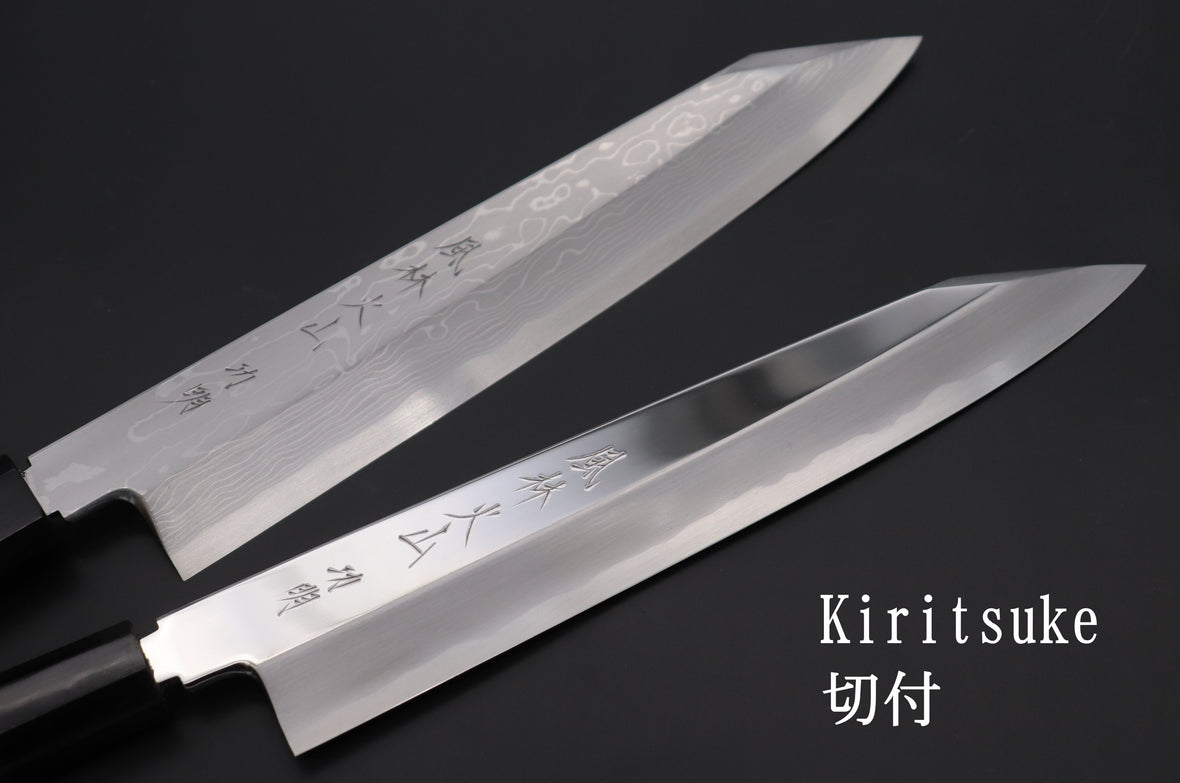We Offer DHL EXPRESS Flat Rate Shipping Worldwide. Just $10 USD for US, Canada, Australia, Asian countries. US$15 for Europe and other Countries in the world

Kiritsuke Single Bevel Edge
The single bevel edged Kiritsuke is a versatile knife that can be used to perform some of the tasks usually done by the Yanagiba and Usuba. The heel section of the knife is virtually flat and can be used just like an Usuba. However, because it a essentially a combination of two knives that were developed for very different tasks, this leads to several functional compromises which require considerable skill to workaround. In fact, in many Japanese food restaurants only the head chef is allowed to use them, therefore the single bevel edged Kiritsuke is often considered to be a symbol of expertise and status, or seniority. In appearance, the single bevel edged Kiritsuke resembles a wider version of the Kiritsuke Yanagiba and it shares the same ‘reverse tanto’ / ‘clip point’ tip, which is very useful for precise cutting. The heel section of the knife is virtually flat, and can be used like an Usuba, but the overall blade length is much longer than the typical Usuba. The larger 270mm-330mm sizes are perfectly capable of performing the long drawing cuts usually done with the Yanagiba.
Kiritsuke Double Bevel Edge (kiritsuke Gyuto)
The lightweight, double bevel edged Kiritsuke might be compared to a combination of the Nakiri and the Sujihiki. It is a very versatile knife that can be used to perform many of the tasks normally done with a Gyuto. The double bevel edged Kiritsuke is available in a variety of different styles, ranging from knives with a blade profile identical to the singe bevel edged Kiritsuke, tall rectangular versions that look like a long Nakiri with a ‘reverse tanto’ tip / ‘clipped point’, and knives which look like a combination of Kiritsuke and Gyuto. All of these types of Kiritsuke have less blade curvature / ‘belly’ than the the typical Gyuto, making them less ideal for ‘rock chopping’, but better suited to ‘push cutting’ and ‘pull cutting’. However, a similar result to ‘rock chopping’ can be achieved by using the tip of the blade with a series of ‘pull cuts', or ‘back slices’, if you make a subsequent second series of cuts at 90 degrees to the first. The double bevel edged Kiritsuke can be used for ‘tap chopping’.
Kiritsuke knives are typically available in blade lengths ranging from 240mm up to 330mm, with the 270mm size being a popular alternative to the Gyuto.
To learn more about the Kirituke knife and see our recommended models, visit our Kirituke Blog.
It offers detailed insights into its hybrid design, versatility, and the craftsmanship behind it.